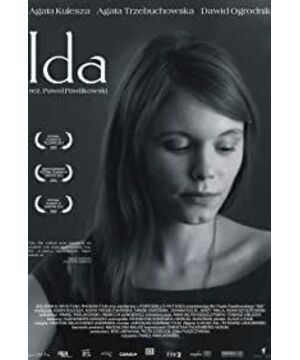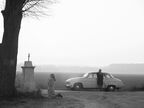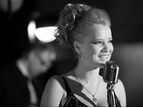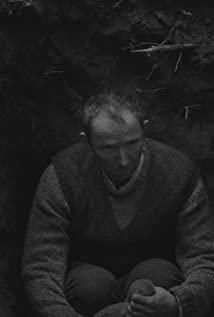American scholar Paul Schrader defined a unique style in film art that is different from tradition in his book "Transcendental Style In Film" (Transcendental Style In Film). This so-called "transcendental style" can convey the presence of the sacred, but it does not appeal to the audience's inner experience of the sacred, but a confirmation of the presence of the sacred based on faith. The completion of the transcendental style must go through three steps, namely daily life, alienation and contemplation, but at the same time he also pointed out that there is a certain kind of fracture in Delaier's work, a kind of "belief" and "unbelief" brewing With a certain kind of brute force," his work did not completely complete the transcendental style. As some comments have mentioned, director Paul Pavlikowski’s reference to Dreyer’s works (especially "The Dilemma of Joan of Arc") is more obvious on the object level, regardless of the subject matter or technique. However, what they did not point out is that, looking further, "Sister Ada" actually inherited the so-called "tradition" in its artistic style. So from this perspective, "Nun Ada" and its director are not "standing on the opposite side of Ozu" as mentioned in some comments, but are standing on the opposite side of Ozu, Bresson, and Delaire. After the director, they formed a line.
It needs to be pointed out that despite the many similarities between "Nun Ada" and the films of these directors, Pavlikowski is not a fake, evil and ugly plagiarism, he also has his own artistic considerations and artistic intuition. For example, almost all the fixed shots of the film put the characters in the corner of the screen, thus leaving a lot of space for each frame of the screen. Such a setting seems to have no meaning and is even called "intentional" by some comments. "Contrived", in fact, is highly compatible with the silent character's personality and the movie text itself. At the same time, we also have to admit that the "white space" and "silence" that exist everywhere in the film do not mean nothingness. The silence between the actions actually hides a huge and fascinating power: the silence of Ada and Wanda It is reminiscent of every silent, "puppet"-like actor in Bresson's movies, and it also makes the viewers feel all kinds of doubts-when Ada takes off her monk's clothes and returns to vulgarity , What did she think? Before Wanda jumped out of the window, what kind of mental activity did she have? What makes the seemingly soulless figure do such an extraordinary act? If you look carefully, you will find that all these fragile movements do not bring about an end, but a long-term problem that can never be solved at the same time.
Of course, rather than saying that these "difficulties" are hidden deep in the hearts of Ada and Wanda, it is better to say that they are hiding in the smog of Polish history. Fascists purged the Jews, and the Poles purged the "dissident elements." The wave after wave of cleaning did not filter out the true face of a country and nation, but was washed red and white, and the victims were all annihilated in the precipitation of time. What remained was the silent executioner. What is particularly ridiculous is that the duel and replacement between the executioner and the executioner turned out to be the driving force to push the wheel of history, so no one can dictate history, the truth gradually became illusory, and the originally scarce words inadvertently turned into a slowdown. The slowly rising smoke ring turned into dark blue whimpering notes; if there were any souls, they all slowly disappeared between breaths and breaths.
Pavlikowski’s precise and sharp instincts about politics and Jewish ethnicity are largely rooted in his own experience. In an interview with the "Filmmaker" magazine, he mentioned that although his parents did not have a deep religious background, he "rediscovered the meaning of religion at some point." Pavlikowski also mentioned in the interview that he did not know his father, but knew that his grandmother was a Jew, and "found that she died in Auschwitz." Here, several "discovers" (discover The two related photos of the word "silence" and the word "silence", which have always been absent, left some traces in Pavlikovsky's heart that he did not even notice. "The appearance of "laid the groundwork for it, which was finally reflected in the interweaving, collision and fusion of the Polish identity, the identity of the god nun, and the Jewish identity of the role of Ada.
Wanda, who has a serious personality but a sloppy private life, and Ada, who also follows the principles of serious life, parted ways at the end of the word "serious"-this undoubtedly tells the viewer that the so-called seriousness of religion and the seriousness of secular politics are completely different. Things are worlds apart. Fundamentally speaking, Ada should be unmoved and fully qualified to sneer at this kind of "false seriousness". However, Ada did not do so, and even found some kind of identification with debauchery, a kind of daring to be. The nuns giggled and rebelled in front of her, even though she chose to die in the end. After all, Ada belongs to a sacred and pure place, free of secularity and killing. She clearly knew that she was not born as a Virgin, nor Joan of Arc; just in the world of colorful flowers, she still hopes to have a taste of it. After all, just a few days of life outside the hospital has given her insight into those eternal love and hatred, and also understand the seemingly moving political ideals. No matter how hot things are, they still have to be flat, and no matter how lofty beliefs are, they are just going to kill.
But does it belong to Judaism or Catholicism? Is it attributed to religion or to the secular? Ada at the three fork in the road hesitated a bit, but she knew in her heart like a mirror that the dust returned to the dust, the dirt returned to the earth, everything was nothing more than this.
———————————————————
In addition to my heartfelt admiration, I must also make any comments about the "whiteness of words" that I will encounter when tracing "Sister Ada", because any words can only describe the "have" in the film, but for the "nothing" Or "blank", we are not only powerless, but also ignorant. Just as Ozu Yasujiro only engraved the word "None" on his tombstone, I am afraid that he has to stand before the inscription and savor it in order to understand the meaning of it.
View more about Ida reviews











